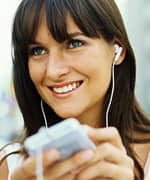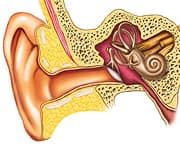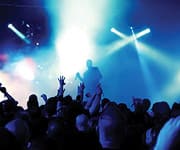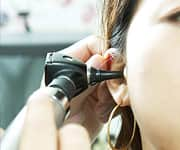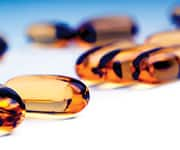Life Extension Magazine®
Preamble So much of what we term “science” emanates from real-world experiences. In my case, I was recently exposed to loud noise that resulted in me developing acute tinnitus that has not fully gone away. I am compelled to relate this incident to spare others the same fate. About six months ago, a group of doctors were in South Florida attending a medical conference. I was invited to go out with them to dinner and they asked me afterwards to join them at a nightclub. When we entered the nightclub, the music was rather subdued and I was able to engage in good scientific discussions with these doctors over drinks. As the night wore on the music was slowly “cranked up.” We nonetheless continued our discussions by talking louder. During the last hour, the music decibels increased so much that one of the doctors had to scream in my ear to be heard. If I had to do it over, I would have walked out. The next day I woke up with severe tinnitus. When I did a Google search to see if one incident of loud noise could cause permanent ringing in the ears I was surprised as to how many people develop tinnitus because of one exposure to loud noise. In my case, it was not just the doctor screaming in my ear over very loud music. When one ingests ethanol, the tiny bones in the ear lose their ability to close in response to loud sounds. Aging also plays a role in our vulnerability to ear damage caused by loud noises. So because of this one confluence of mishaps, I am left with mild tinnitus. To sleep, I turn up my air purifier so it covers up the ringing. I do this sometimes in the daytime also. For the most part I just try to ignore it. One major change I made is to carry ear plugs with me whenever I may be exposed to any kinds of excess noise. Putting in these ear plugs enables me to hear conversation, but drastically reduces the background noise that enters my ears. So the take-home lesson I want to relay to Life Extension® members is:
The following article discusses partial solutions for mitigating tinnitus. Strategies to Protect and Preserve Your HearingAccording to the Environmental Protection Agency, noise pollution “adversely affects the lives of millions of people.”1 The EPA warns that health problems related to noise can include high blood pressure, sleep disruption, stress related illnesses along with countless other adverse health issues.2 Noise Induced Hearing Loss (NIHL) is the most recognized damaging impact of loud noise. Part of the reason that noise pollution has not received the critical public attention of air or water pollution is because you cannot see it or taste it. Yet, if you are one of the 10 million American adults who experiences noise-induced hearing loss, or one of the 40 million with chronic tinnitus (ringing in the ears), you already understand the stressful impact of noise on your life.3,4 What most doctors and audiologists don’t tell you is what you can do to help restore some of your lost function, and prevent further damage. In this article, we will provide specific steps you can take to shield yourself and your family from the growing dangers of chronic noise. Long-Term Health Risks of Noise PollutionExperts estimate that 30 million Americans are exposed to dangerous levels of noise each day.5 Chronic loss of hearing, especially in the higher frequencies where we perceive speech, is becoming increasingly common, with 10 million adults and 5.2 million children suffering from irreversible noise-induced hearing loss in the US alone.4 Frighteningly, people are developing measurable hearing loss at earlier and earlier ages.6 Tinnitus, the most common auditory disorder, affected about 40 million people in the US in 2010.3 There’s no medical cure for tinnitus, and its incidence is rising, chiefly due to noise in the environment.3 While progressive hearing loss and tinnitus have obvious impact on your quality of life, there is now growing evidence that these problems can also trigger sleep disturbance, high blood pressure, elevated heart rate, and increased psychological and physiologic stress.4,7 Elevated levels of the dangerous stress hormone cortisol are found in people with hearing loss and tinnitus — and cortisol elevations lead to cardiovascular disease, diabetes, bone loss, and early death.4 Scientists once thought that hearing loss and tinnitus were inevitable and irreversible consequences of aging itself. Not so, according to recent studies.8 The majority of hearing abnormalities in adults are now understood to be the result of two major kinds of noise: chronically elevated noise of the kind found in many industrial settings, nightclubs, and rock concerts along with “impulse noise,” or the sudden, sharp onslaught of a loud noise. Ironically, it has been soldiers returning from recent wars who have advanced our scientific understanding of noise injury, especially those caused by impulse noise.9,10 Their exposure to gunshots, blasts, and other explosions has triggered an outpouring of research on how sound energy damages hearing.
How Noise Harms HearingYour ear is a complex organ with a deceptively simple task: turning the energy from sound waves into nerve impulses that your brain can interpret. Here’s what happens, in a nutshell: Sound waves, which transmit energy through the air, strike your eardrum, which vibrates very slightly as a result. Tiny bones in your middle ear, called ossicles, then amplify that slight movement by acting as little levers. The last part of that system of levers then pushes fairly strongly on a thin membrane, transmitting the vibrations to your spiral-shaped cochlea, or inner ear. Your cochlea is filled with fluid and lined with specialized nerve cells called hair cells, which are sensitive to movement. When the fluid moves in response to pressure from the ossicles, hair cells generate minute electrical impulses. Those impulses then travel up your auditory nerve to the brain’s sound-processing areas. From there, higher-functioning parts of your brain interpret the sounds and respond to them appropriately. Most of the time, this system works flawlessly, but like any system with moving parts, there is gradual deterioration. The bulk of the damage caused by loud noises is done at the level of the hair cells.15 To transmit a loud sound accurately, those cells must generate a burst of metabolic activity, consuming energy and generating reactive oxygen and nitrogen species.8,9 They also release copious amounts of the excitatory neurotransmitter glutamate, which is intrinsically damaging over the long haul.16,17 With each exposure to loud noise—whether continuous or sudden—your hair cells are literally working themselves to death. Free radicals and glutamate toxicity conspire to reduce blood flow to the cochlea, which produces additional oxidative stress, in the now-familiar cycle of tissue destruction.16,18-23 Ultimately, hair cells die, and when you lose hair cells, you lose hearing.9,20 Scientists now understand that the typical “age-related” hearing loss is nothing more than a drawn-out version of the destruction wrought by sound energy, spread out over a lifetime.8,23 Sudden loud noise also known as impulse noise seems to produce greater risk of hearing loss than continuous noise.9 If you encounter a very loud sound, especially on a background of already loud noise, you may suffer from acoustic shock injury (ASI). Symptoms of this sudden loud noise can produce ear pain, tinnitus, hyper-acute hearing or phonophobia (apprehension of loud noises), vertigo, and numbness or burning sensations around the ear.24 Psychological reactions to acoustic shock injury can include emotional trauma, anxiety, and even depression.24 Tinnitus is far and away the most common and irritating symptom that follows sudden noise exposure; 94% of soldiers studied on a firing range reported experiencing tinnitus.10 Tinnitus has many causes, not all of which are well understood, and no definitive cure.3,25,26 Tinnitus results at least in part from the excitatory stimulus of glutamate, which leaves hair cells producing electrical signals long after the original stimulus has gone.27,28 It may also result from impaired inhibitory signals from deep brain areas that normally “tune out” abnormal impulses arising from damaged hair cells.3,26 Finally, many people who suffer exposure to impulse noise are left with a condition called tonic tensor tympani syndrome, or TTTS.24 This disconcerting syndrome is caused by excessive sensitivity to loud noises, leaving the eardrum in a constant state of alertness, ready to tense up in response to the next burst of sound. The result is ear pain, often with a fluttering sensation or sense of fullness in the ear. With all of the threats to your hearing from our noisy world, what can you do to protect yourself? More than you might think. Good physical protection is important and readily attainable through the use of low-cost earplugs, and boosting your intake of certain antioxidants and minerals can markedly reduce both short and long-term damage to your hearing, as we are about to see.
Defend Your Ears Physically: The Role of Hearing ProtectorsPhysical ear protection has long been considered the “last line of defense” after noise reduction and regulations.29,30 But until recently, most studies focused on noise in the workplace, where the threats are predictable and the solutions largely controllable. Recent evidence suggests that noise in everyday environments, like busy streets or entertainment venues poses equally great hazards. Nightclubs, for example, often produce peak sound levels as high as 107 decibels (dBA), while the maximum safe industrial sound level is considered to be 85 dBA, and for regular environmental exposure is 70 dBA.6,31-34 Urban dwellers may be exposed to chronic sound levels above 74 dBA simply during their daily activities, and above 79 dBA on public transit.6,31 Even if you stay out of noisy clubs, your leisure activities may put you at risk for unacceptable sound levels. Using power tools, driving loud vehicles, and hunting or target shooting are all examples of common activities that generate continuous or impulse sound that can hurt your hearing.36 Industrial workers often use “earmuff” type hearing protection, and some fields now even use advanced technologies like active noise reduction or noise cancellation, in which electronic circuits blunt the impact of noise. Such solutions are impractical for the average citizen, however. The best hearing protection available to most of us is the simple earplug, which produces passive noise reduction just by blocking or dampening excessive sound energy before it lands on the eardrum. Experts believe that comfort should be the number one consideration, even above technical reduction of noise level. The argument, essentially, is that the “perfect” earplug that doesn’t get worn is of little use compared to a comfortable one that will be worn regularly.32 Another important feature of your hearing protection should be that it allows normal, natural communication. Too much sound reduction can reduce your ability to perceive speech naturally, or to hear and respond to sounds that warn of hazards.37 Excellent hearing protection is now available in the form of “social ear plugs” that allow you to reduce ambient noise levels while remaining attentive to the speech of those nearby. When it comes to how much sound will be blocked, not all earplugs are the same. Like sun tan lotion with different SPFs, there are different protection factors for earplugs. This is known as the Noise Reduction Rating (NRR). The NRR is a rating system that has been set up by the Environmental Protection Agency (EPA) to represent how much noise the earplugs will block when worn properly. An important factor in determining a product’s NRR is its attenuation. The opposite of amplification, attenuation is any reduction in signal strength. Attenuation for hearing protection devices is determined by a panel of human subjects over a range of frequencies. The average attenuation is then used in calculating the NRR. The higher the NRR the more noise the earplug will block out. Rock musicians are constantly exposed to high decibel sound and now an entire generation is experiencing tinnitus or noise induced hearing loss. The most famous example is Pete Townsend of The Who. Because musicians have to hear what they are singing and what their band mates are playing they need a well designed ear plug that allows them to hear the high notes and low notes of the music yet protect them from destructive sound. Musician earplugs should have an NRR of at least 12. Choose your hearing protection, then, based on its comfort, its “social graces,” and of course its cost. Comfortable, effective, musician-grade earplugs can be found for less than $20 per pair from reputable manufacturers.
Defend Your Hearing With SupplementsGiven the major role of oxidant stress in triggering noise-induced hearing loss, it’s natural to ask if antioxidant supplements might alleviate the risk. Once again, we can thank our soldiers for a large part of the answer; studies show that antioxidants administered before sound exposure can mitigate hearing loss in combat situations.9 What follows is a summary of readily-available supplements that you should use on a daily basis to optimize your body’s defenses against oxidant-mediated, noise-induced hearing loss.
|
MagnesiumMagnesium treatment has been repeatedly shown to reduce the incidence of both temporary and permanent noise-induced hearing loss.38 Magnesium readily penetrates the cochlea from the blood.39 It improves blood flow around the cochlea, and is a vital cofactor in the body’s major antioxidant defense enzyme systems; it may have other mechanisms of action as well.39,40 Laboratory studies show dramatic reduction in noise-induced hearing loss when animals receive magnesium supplements prior to impulse noise such as gunshots.41,42 When human military recruits took 167 mg of magnesium daily during a two-month basic training period, the rate of substantial hearing damage was half that of a control group of soldiers.43 Recruits in this study were exposed to daily mean peak sound levels of 164 dBA, a very high value. Similar results have been found in other studies in military settings, with magnesium supplements reducing both the frequency and the severity of significant hearing loss.44,45 Recruits with the highest blood magnesium levels had the least severe hearing damage, and effects were similar on both temporary and permanent hearing loss. N-acetylcysteine (NAC) and Acetyl-L-Carnitine
N-acetylcysteine (NAC) is a potent antioxidant capable of repleting the body’s own antioxidant defenses, and acetyl-L-carnitine is a well-known mitochondrial nutrient that supports cellular energy metabolism. Both nutrients are emerging as leading candidates for hearing protection both before and after exposure to loud noises. Studies with NAC and acetyl-L-carnitine in combination demonstrate less hair cell loss, lower oxidant levels, and reduced temporary and permanent hearing loss in animals exposed to loud impulse noise.46,47 The effect is so strong that the combination is still effective if used 1-4 hours after the noise exposure.46 Multiple studies demonstrate powerful protection of hair cells and cochlear blood flow in animals treated with NAC alone, resulting in reduced permanent hearing loss, both prior to and following impulse noise.48-50 Human studies using 1,200 mg of NAC daily for two weeks in military recruits exposed to impulse noise at peak levels as high as 165 dB, and in civilian workers exposed to industrial noise at as high as 89 dB, have shown similar protection, with substantial reduction in hearing loss, especially in the higher frequencies where we perceive speech.51,52 MelatoninMelatonin is an intriguing hormone naturally produced in the pineal gland. Its multiple effects tend to balance out disturbances in the biological environment, including oxidant stress.53 Melatonin also decreases activity of dopamine, an excitatory neurotransmitter.54 Studies with melatonin show potent effects at reducing cochlear damage and preventing hair cell loss in animals, with concomitant protection of hearing thresholds. Melatonin was more effective than either of two powerful steroid anti-inflammatory drugs, methylprednisolone or dexamethasone.55,56 Melatonin may be uniquely effective in reducing both the perception of tinnitus, and the sleep disturbances tinnitus can produce.53 At doses of 3 mg/day, human studies show a 40% reduction in tinnitus perception.54 The same dose also improved sleep quality in a group of patients with chronic tinnitus.57 Other NutrientsA variety of other antioxidant vitamins and nutrients have shown promise in reducing noise-induced hearing loss and/or the hair cell damage that produces it. Seventy-nine percent of patients with sudden hearing loss treated with vitamin E had significant hearing gain, compared with just 45% of those in a control group.58 Laboratory studies show less destruction in the cochleae of vitamin E-treated animals than in controls, with concomitant improvement in hearing.59,60 Lipoic acid is an antioxidant nutrient with proven benefit against the oxidant stress induced by impulse noise and blast injury.61,62 Animals treated with lipoic acid have substantially lower levels of oxidant molecules in blood and cochlea, and their hearing is protected significantly compared to untreated ones.63,64 Studies have shown that serum levels of toxic homocysteine are elevated in humans with noise-induced hearing loss or tinnitus, while levels of the anti-homocysteine nutrients folate and vitamin B12 are lowered.65-67 Raising plasma B12 levels to slightly above normal range with oral cyanocobalamin supplements at 1,000 mcg/day resulted in significant improvement in hearing levels in human subjects, compared with placebo recipients.68 SummaryNoise-induced hearing loss and tinnitus are major public health problems, and their incidence is rapidly rising in our noise-saturated society. Noise causes dramatic physical changes in the delicate structures of your inner ear, changes driven by oxidant stress. Previously thought to be irreversible, both noise-induced hearing loss and tinnitus are now showing signs of yielding to prompt treatment with nutrients that can boost your antioxidant levels, including magnesium, N-acetylcysteine, acetyl-L-carnitine, and others. Using a good, comfortable earplug can also reduce your exposure to hearing-threatening noises—keep a pair handy at all times.
If you have any questions on the scientific content of this article, please call a Life Extension® Health Advisor at 1-866-864-3027. | ||||
| References | ||||
| 1. Available at: http://www.epa.gov/air/noise.html. Accessed February 8, 2012. 2. Available at: http://www.nonoise.org/library/handbook/handbook.htm. Accessed February 8, 2012. 3. Rauschecker JP, Leaver AM, Muhlau M. Tuning out the noise: limbic-auditory interactions in tinnitus. Neuron. 2010 Jun 24;66(6):819-26. 4. Seidman MD, Standring RT. Noise and quality of life. Int J Environ Res Public Health. 2010 Oct;7(10):3730-8. 5. Available at: http://www.asha.org/careers/professions/hla.htm. Accessed February 8, 2012. 6. Katbamna B, Flamme GA. Acquired hearing loss in adolescents. Pediatr Clin North Am. 2008 Dec;55(6):1391-402, x. 7. Marsh JP, Jellicoe P, Black B, Monson RC, Clark TA. Noise levels in adult and pediatric orthopedic cast clinics. Am J Orthop (Belle Mead NJ). 2011 Jul;40(7):E122-4. 8. Reiss M, Reiss G. Presbyacusis: pathogenesis and treatment. Med Monatsschr Pharm. 2009 Jun;32(6):221-5. 9. Clifford RE, Rogers RA. Impulse noise: theoretical solutions to the quandary of cochlear protection. Ann Otol Rhinol Laryngol. 2009 Jun;118(6):417-27. 10. Moon IS, Park SY, Park HJ, Yang HS, Hong SJ, Lee WS. Clinical characteristics of acoustic trauma caused by gunshot noise in mass rifle drills without ear protection. J Occup Environ Hyg. 2011 Oct;8(10):618-23. 11. Vogel I, Brug J, Van der Ploeg CP, Raat H. Adolescents risky MP3-player listening and its psychosocial correlates. Health Educ Res. 2011 Apr;26(2):254-64. 12. Levey S, Levey T, Fligor BJ. Noise exposure estimates of urban MP3 player users. J Speech Lang Hear Res. 2011 Feb;54(1):263-77. 13. Berg AL, Serpanos YC. High frequency hearing sensitivity in adolescent females of a lower socioeconomic status over a period of 24 years (1985-2008). J Adolesc Health. 2011 Feb;48(2):203-8. 14. Sekhar DL, Rhoades JA, Longenecker AL, et al. Improving detection of adolescent hearing loss. Arch Pediatr Adolesc Med. 2011 Dec;165(12):1094-100. 15. Zuo H, Cui B, She X, Wu M. Changes in Guinea pig cochlear hair cells after sound conditioning and noise exposure. J Occup Health. 2008;50(5):373-9. 16. Pujol R, Puel JL. Excitotoxicity, synaptic repair, and functional recovery in the mammalian cochlea: a review of recent findings. Ann N Y Acad Sci. 1999 Nov 28;884:249-54. 17. Mazurek B, Stover T, Haupt H, Gross J, Szczepek A. The role of cochlear neurotransmitters in tinnitus. HNO. 2007 Dec;55(12):964-71. 18. Heinrich UR, Selivanova O, Feltens R, Brieger J, Mann W. Endothelial nitric oxide synthase upregulation in the guinea pig organ of Corti after acute noise trauma. Brain Res. 2005 Jun 14;1047(1):85-96. 19. Fujioka M, Kanzaki S, Okano HJ, Masuda M, Ogawa K, Okano H. Proinflammatory cytokines expression in noise-induced damaged cochlea. J Neurosci Res. 2006 Mar;83(4):575-83. 20. Abi-Hachem RN, Zine A, Van De Water TR. The injured cochlea as a target for inflammatory processes, initiation of cell death pathways and application of related otoprotectives strategies. Recent Pat CNS Drug Discov. 2010 Jun;5(2):147-63. 21. Le Prell CG, Gagnon PM, Bennett DC, Ohlemiller KK. Nutrient-enhanced diet reduces noise-induced damage to the inner ear and hearing loss. Transl Res. 2011 Jul;158(1):38-53. 22. Le Prell CG, Hughes LF, Miller JM. Free radical scavengers vitamins A, C, and E plus magnesium reduce noise trauma. Free Radic Biol Med. 2007 May 1;42(9):1454-63. 23. Jamesdaniel S, Hu B, Kermany MH, et al. Noise induced changes in the expression of p38/MAPK signaling proteins in the sensory epithelium of the inner ear. J Proteomics. 2011 Dec 21;75(2):410-24. 24. Westcott M. Acoustic shock injury (ASI). Acta Otolaryngol Suppl. 2006 Dec (556):54-8. 25. Guitton MJ, Wang J, Puel JL. New pharmacological strategies to restore hearing and treat tinnitus. Acta Otolaryngol. 2004 May;124(4):411-5. 26. Nowotny M, Remus M, Kossl M, Gaese BH. Characterization of the perceived sound of trauma-induced tinnitus in gerbils. J Acoust Soc Am. 2011 Nov;130(5):2827. 27. Sahley TL, Nodar RH. A biochemical model of peripheral tinnitus. Hear Res. 2001 Feb;152(1-2):43-54. 28. Brozoski TJ, Wisner KW, Sybert LT, Bauer CA. Bilateral dorsal cochlear nucleus lesions prevent acoustic-trauma induced tinnitus in an animal model. J Assoc Res Otolaryngol. 2011 Oct 4. 29. Voix J, Hager LD. Individual fit testing of hearing protection devices. Int J Occup Saf Ergon. 2009;15(2):211-9. 30. Seixas NS, Neitzel R, Stover B, et al. A multi-component intervention to promote hearing protector use among construction workers. Int J Audiol. 2011 Mar;50 Suppl 1:S46-56. 31. Neitzel RL, Gershon RR, McAlexander TP, Magda LA, Pearson JM. Exposures to transit and other sources of noise among New York City residents. Environ Sci Technol. 2012 Jan 3;46(1):500-8. 32. Lusk SL. Noise exposures. Effects on hearing and prevention of noise induced hearing loss. AAOHN J. 1997 Aug;45(8):397-408; quiz 09-10. 33. Gunderson E, Moline J, Catalano P. Risks of developing noise-induced hearing loss in employees of urban music clubs. Am J Ind Med. 1997 Jan;31(1):75-9. 34. Williams W, Beach EF, Gilliver M. Clubbing: the cumulative effect of noise exposure from attendance at dance clubs and night clubs on whole-of-life noise exposure. Noise Health. 2010 Jul-Sep;12(48):155-8. 35. Orlando P, Perdelli F, Cristina ML, Piromalli W. Environmental and personal monitoring of exposure to urban noise and community response. Eur J Epidemiol. 1994 Oct;10(5):549-54. 36. Nondahl DM, Cruickshanks KJ, Dalton DS, et al. The use of hearing protection devices by older adults during recreational noise exposure. Noise Health. 2006 Oct-Dec;8(33):147-53. 37. Van Wijngaarden SJ, Rots G. Balancing speech intelligibility versus sound exposure in selection of personal hearing protection equipment for Chinook aircrews. Aviat Space Environ Med. 2001 Nov;72(11):1037-44. 38. Nageris BI, Ulanovski D, Attias J. Magnesium treatment for sudden hearing loss. Ann Otol Rhinol Laryngol. 2004 Aug;113(8):672-5. 39. Sendowski I. Magnesium therapy in acoustic trauma. Magnes Res. 2006 Dec;19(4):244-54. 40. Tamir S, Adelman C, Weinberger JM, Sohmer H. Uniform comparison of several drugs which provide protection from noise induced hearing loss. J Occup Med Toxicol. 2010;5:26. 41. Yildirim C, Yagiz R, Uzun C, Tas A, Bulut E, Karasalihoglu A. The protective effect of oral magnesium supplement on noise-induced hearing loss. Kulak Burun Bogaz Ihtis Derg. 2006;16(1):29-36. 42. Abaamrane L, Raffin F, Gal M, Avan P, Sendowski I. Long-term administration of magnesium after acoustic trauma caused by gunshot noise in guinea pigs. Hear Res. 2009 Jan;247(2):137-45. 43. Joachims Z, Netzer A, Ising H, et al. Oral magnesium supplementation as prophylaxis for noise-induced hearing loss: results of a double blind field study. Schriftenr Ver Wasser Boden Lufthyg. 1993;88:503-16. 44. Attias J, Sapir S, Bresloff I, Reshef-Haran I, Ising H. Reduction in noise-induced temporary threshold shift in humans following oral magnesium intake. Clin Otolaryngol Allied Sci. 2004 Dec;29(6):635-41. 45. Attias J, Weisz G, Almog S, et al. Oral magnesium intake reduces permanent hearing loss induced by noise exposure. Am J Otolaryngol. 1994 Jan-Feb;15(1):26-32. 46. Coleman JK, Kopke RD, Liu J, et al. Pharmacological rescue of noise induced hearing loss using N-acetylcysteine and acetyl-L-carnitine. Hear Res. 2007 Apr;226(1-2):104-13. 47. Kopke R, Bielefeld E, Liu J, et al. Prevention of impulse noise-induced hearing loss with antioxidants. Acta Otolaryngol. 2005 Mar;125(3):235-43. 48. Bielefeld EC, Kopke RD, Jackson RL, Coleman JK, Liu J, Henderson D. Noise protection with N-acetyl-l-cysteine (NAC) using a variety of noise exposures, NAC doses, and routes of administration. Acta Otolaryngol. 2007 Sep;127(9):914-9. 49. Lorito G, Giordano P, Petruccelli J, Martini A, Hatzopoulos S. Different strategies in treating noiseinduced hearing loss with N-acetylcysteine. Med Sci Monit. 2008 Aug;14(8):BR159-64. 50. Fetoni AR, Ralli M, Sergi B, Parrilla C, Troiani D, Paludetti G. Protective effects of N-acetylcysteine on noise-induced hearing loss in guinea pigs. Acta Otorhinolaryngol Ital. 2009 Apr;29(2):70-5. 51. Lin CY, Wu JL, Shih TS, et al. N-Acetyl-cysteine against noise-induced temporary threshold shift in male workers. Hear Res. 2010 Oct 1;269(1-2):42-7. 52. Lindblad AC, Rosenhall U, Olofsson A, Hagerman B. The efficacy of N-acetylcysteine to protect the human cochlea from subclinical hearing loss caused by impulse noise: A controlled trial. Noise Health. 2011 Nov-Dec;13(55):392-401. 53. Pirodda A, Raimondi MC, Ferri GG. Exploring the reasons why melatonin can improve tinnitus. Med Hypotheses. 2010 Aug;75(2):190-1. 54. Lopez-Gonzalez MA, Santiago AM, Esteban-Ortega F. Sulpiride and melatonin decrease tinnitus perception modulating the auditolimbic dopaminergic pathway. J Otolaryngol. 2007 Aug;36(4):213-9. 55. Karlidag T, Yalcin S, Ozturk A, et al. The role of free oxygen radicals in noise induced hearing loss: effects of melatonin and methylprednisolone. Auris Nasus Larynx. 2002 Apr;29(2):147-52. 56. Bas E, Martinez-Soriano F, Lainez JM, Marco J. An experimental comparative study of dexamethasone, melatonin and tacrolimus in noise-induced hearing loss. Acta Otolaryngol. 2009 Apr;129(4):385-9. 57. Hurtuk A, Dome C, Holloman CH, et al. Melatonin: can it stop the ringing? Ann Otol Rhinol Laryngol. 2011 Jul;120(7):433-40. 58. Joachims HZ, Segal J, Golz A, Netzer A, Goldenberg D. Antioxidants in treatment of idiopathic sudden hearing loss. Otol Neurotol. 2003 Jul;24(4):572-5. 59. Hou F, Wang S, Zhai S, Hu Y, Yang W, He L. Effects of alpha-tocopherol on noise-induced hearing loss in guinea pigs. Hear Res. 2003 May;179(1-2):1-8. 60. Hou FX, Wang S. Preventive effects of vitamin E on short-term noise-induced hearing loss in guinea pigs. Zhonghua Lao Dong Wei Sheng Zhi Ye Bing Za Zhi. 2005 Dec;23(6):408-10. 61. Armstrong KL, Cooper MF, Williams MT, Elsayed NM. Vitamin E and lipoic acid, but not vitamin C improve blood oxygenation after high-energy IMPULSE noise (BLAST) exposure. Biochem Biophys Res Commun. 1998 Dec 9;253(1):114-8. 62. Elsayed NM, Armstrong KL, William MT, Cooper MF. Antioxidant loading reduces oxidative stress induced by high-energy impulse noise (blast) exposure. Toxicology. 2000 Nov 30;155(1-3):91-9. 63. Diao MF, Liu HY, Zhang YM, Gao WY. Changes in antioxidant capacity of the guinea pig exposed to noise and the protective effect of alpha-lipoic acid against acoustic trauma. Sheng Li Xue Bao. 2003 Dec 25;55(6):672-6. 64. Pouyatos B, Gearhart C, Nelson-Miller A, Fulton S, Fechter LD. Lipoic acid and 6-formylpterin reduce potentiation of noise-induced hearing loss by carbon monoxide: preliminary investigation. J Rehabil Res Dev. 2008;45(7):1053-64. 65. Shemesh Z, Attias J, Ornan M, Shapira N, Shahar A. Vitamin B12 deficiency in patients with chronic-tinnitus and noise-induced hearing loss. Am J Otolaryngol. 1993 Mar-Apr;14(2):94-9. 66. Gok U, Halifeoglu I, Canatan H, Yildiz M, Gursu MF, Gur B. Comparative analysis of serum homocysteine, folic acid and Vitamin B12 levels in patients with noise-induced hearing loss. Auris Nasus Larynx. 2004 Mar;31(1):19-22. 67. Gok U, Halifeoglu I, Yildiz M. The levels of vitamins A, E, B12 and folic acid in noise-induced hearing loss. Kulak Burun Bogaz Ihtis Derg. 2004;12(3-4):60-4. 68. Quaranta A, Scaringi A, Bartoli R, Margarito MA, Quaranta N. The effects of ‘supra-physiological’ vitamin B12 administration on temporary threshold shift. Int J Audiol. 2004 Mar;43(3):162-5. 69. Figueiredo RR, de Azevedo AA, de Oliveira PM, Amorim SP, Rios AG, Baptista V. Incidence of tinnitus in mp3 player users. Braz J Otorhinolaryngol. 2011 Jun;77(3):293-8. 70. Khan M, Gross J, Haupt H, et al. A pilot clinical trial of the effects of coenzyme Q10 on chronic tinnitus aurium. Otolaryngol Head Neck Surg. 2007 Jan;136(1):72-7. 71. Available at: http://members.fortunecity.com/nrbq1/tinnitus.html. Accessed December 21, 2011. |



